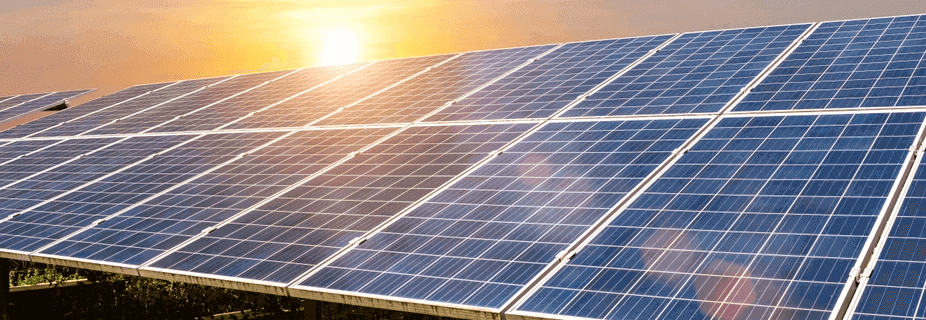KEY POINTS
- There are three main types of solar panels: thin film, monocrystalline and polycrystalline.
- Solar cells are housed in a protective layer of reinforced glass to avoid damage.
- Many mistakenly believe solar panels require coal in their production, however this isn’t necessarily the case.
Solar panels are a bit like computers. Most of us know what they are and how they’re used, but do we really know what they’re made of? Most of us wouldn’t have a clue how solar panels are made or what materials they require.
We’ll explore what solar panels are made of, how and where they’re made and more. Find out everything you need to know about what goes into a solar panel in this Canstar Blue guide.
On this page, you’ll find:
Advertisement
What is a solar panel made of?
Solar photovoltaic (PV) panels can consist of a variety of materials and parts depending on what type of panel it is. There are three types of solar panels: thin film, monocrystalline and polycrystalline – each of which is made up of crystalised silicon wafers. The PV cells of solar roof tiles share the same technologies.
Typically, a solar panel consists of a layer of hardened glass that protects the silicon cells within and an aluminium or plastic frame for mounting.
Solar panel materials
There are six main components found in a solar panel:
- Solar photovoltaic (PV) cells
- Reinforced glass
- Aluminium or plastic frame
- Ethylene vinyl acetate (EVA) film layers
- Polymer solar backsheet
- PV junction box with diodes, cables and connectors
Solar photovoltaic (PV) cells
PV cells have one crucial role: turning sunlight into DC energy. There are two main types of cells, monocrystalline and polycrystalline, both derived from silicon. The average solar panel will contain around 60 individual cells linked together via busbars and fingers. A solar inverter is required to convert captured DC into AC energy for use at home.
Reinforced glass
High-quality solar panels use a reinforced glass front sheet to protect the cells from the elements. This is tempered glass that’s normally up to 4mm thick, designed to resist all weather events and support heavy mechanical loads.
Aluminium or plastic frame
In addition to protecting the edge of the solar panels, the frame provides a solid structure upon which the solar panel can be mounted. Aluminium is a higher-quality frame material as it lasts longer and can withstand wind, rain or hail.
Ethylene vinyl acetate (EVA) film layers
For increased longevity, PV cells are encapsulated in a plastic layer called Ethylene vinyl acetate, or EVA. This film is extremely durable and weather-resistant, preventing moisture and dirt from contaminating the cells.
Polymer solar backsheet
The backsheet is the bottom layer of a solar panel and is made from polymer. It’s not visible once the panels are installed but plays an important role in insulating the system against the weather.
PV junction box with diodes, cables and connectors
A PV junction box is the last thing to be attached when manufacturing solar panels. It’s a weatherproof enclosure that sits underneath the panel where the diodes, cables and connectors sit which interlink the panels.
Solar plans and prices
If you are interested in what solar panels are made of and are looking at investing in solar panels, it’s a good idea to have a look at solar plans and the feed-in tariffs they currently offer. The following Canstar Blue tool shows some solar plans presently on the market.
Here are some of the cheapest solar-specific deals from the retailers on our database. These costs are based on the Ausgrid network in Sydney but prices will vary depending on your circumstances. We show one product per retailer, listed in order of lowest price first. Annual price estimates assume general energy usage of 3900kWh/year for a residential customer on a single rate tariff. Price estimates exclude solar feed-in tariff credits. These are products from referral partners†. Our database may not cover all deals in your area, and please check retailer websites for up to date information. Here are some of the cheapest solar-specific deals from the retailers on our database. These costs are based on the Citipower network in Melbourne but prices will vary depending on your circumstances. We show one product per retailer, listed in order of lowest price first. Annual price estimates assume general energy usage of 4000kWh/year for a residential customer on a single rate tariff. Price estimates exclude solar feed-in tariff credits. These are products from referral partners†. Our database may not cover all deals in your area, and please check retailer websites for up to date information. Here are some of the cheapest solar-specific deals from the retailers on our database. These costs are based on the Energex network in Brisbane but prices will vary depending on your circumstances. We show one product per retailer, listed in order of lowest price first. Annual price estimates assume general energy usage of 4600kWh/year for a residential customer on a single rate tariff. Price estimates exclude solar feed-in tariff credits. These are products from referral partners†. Our database may not cover all deals in your area, and please check retailer websites for up to date information. Here are some of the cheapest solar-specific deals from the retailers on our database. These costs are based on SA Power network in Adelaide but prices will vary depending on your circumstances. We show one product per retailer, listed in order of lowest price first. Annual price estimates assume general energy usage of 4000kWh/year for a residential customer on a single rate tariff. Price estimates exclude solar feed-in tariff credits. These are products from referral partners†. Our database may not cover all deals in your area, and please check retailer websites for up to date information.
How are solar panels made?
As they grow in popularity, it’s worth knowing a thing or two about how solar panels are made. Here are some key things to know about solar panel materials and the manufacturing process.
How to make a solar panel?
Don’t try this one at home. Solar panel manufacturing is highly technical and best left to the experts. In basic terms, here’s what the manufacturing process typically looks like:
Create silicon from quartz sand – quartz sand is heated to its boiling point and its crystals are extracted and melted into ingots.
Convert ingots to solar cells – these ingots are cut down into blocks and then into paper-thin wafers.
Add doping material – rare earth metals are added to the silicon wafers, enhancing their ability to absorb sunlight.
Install solar cell busbars and fingers – busbars and fingers are added to the surface of the wafers, giving the PV cells their distinct matrix pattern.
Lamination and framing – the cells are carefully laminated with tempered glass at the top and a polymer solar backsheet at the bottom, with an EVA layer holding the cells tightly between them.
Framing the cells – the tempered cells are fitted into an aluminium or plastic frame.
Assemble and finish with a junction box – the junction box is attached to the final solar panel.
Are solar panels made from coal?
There’s a common myth that solar panels are made from coal and quartz. However, this isn’t necessarily the case. While some solar panel frames, backsheets and junction boxes are made with coal-reliant polyvinyl chloride (PVC), the panels themselves aren’t made from coal. That being said, the silicon used to make PV cells does use quartz and requires a lot of energy to be manufactured, which might make use of coal-fired power.
Where are solar panels made?
Solar panels are made all over the world, with the majority of manufacturing happening in China. Some of the other countries producing solar panels include Australia, Korea, Singapore, Thailand, Mexico and Germany. If you’re looking for a locally made product, ask your solar installer for recommendations.
What does it take to manufacture solar panels?
We’ve covered what solar panels are made of, but how much energy does it take to make one? Unfortunately, there’s no straight answer as differently sized systems require varying power to manufacture. As a general idea, it might take 200kWh to make a 100W solar panel.
What are solar cells made of?
Most photovoltaic cells are made of silicon, one of the world’s most useful materials. Silicon is the go-to material for solar cells because it absorbs roughly the same amount of energy as the radiation emitted by the sun. Through a complicated process called doping which involves changing the way atoms move, silicon solar cells are able to conduct and create solar energy.
What minerals are used to make solar panels?
A solar panel is made up of four key metals and minerals that enable it to convert the sun’s rays into electricity, according to the NSW Department of Planning and Environment. These solar panel materials are:
- Copper: found in the wiring of solar panels and some types of cells
- Silicon: produced from sand and quartz-rich rock and is found in photovoltaic cells
- Silver: conducts electric current that’s found on crystalline solar cells
- Zinc: used in certain photovoltaic technology to achieve higher solar cell efficiency
What is the best type of solar panel?
Choosing the best solar panels ultimately comes down to your personal circumstances like your budget, roof size and positioning and energy needs (e.g. commercial vs residential solar). As solar power becomes increasingly popular in Australia, it’s important to do your research, which is why it’s best to get in touch with a licenced solar installer.
To help where we can, Canstar Blue publishes a yearly review of solar panel installers, which rates companies on factors like system durability, installation process, performance, customer service and overall satisfaction. This way you can get a better idea of which installers are rated best among paying customers. Click on the link below to compare now.
Original reporting by Jared Mullane
Image Source: Porstocker/Shutterstock.com




Share this article